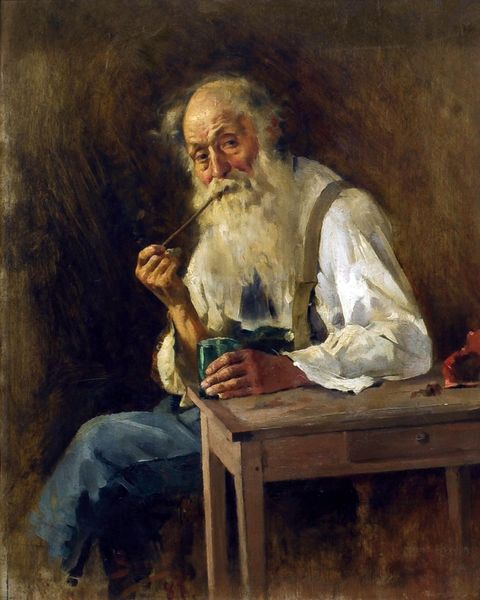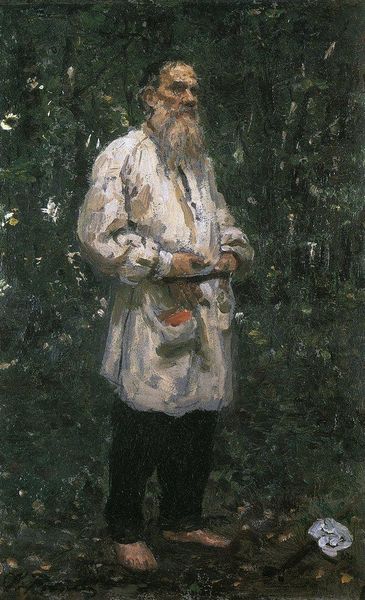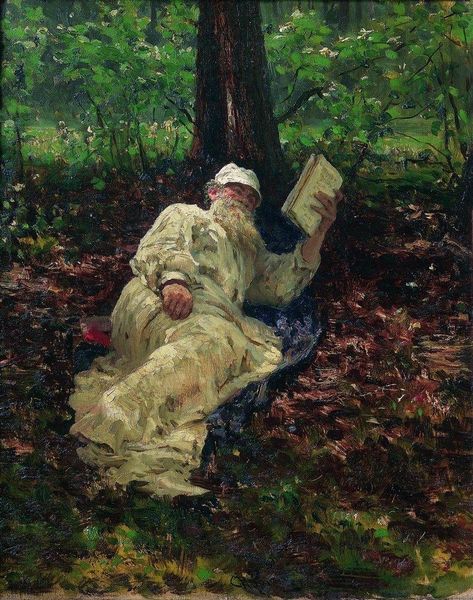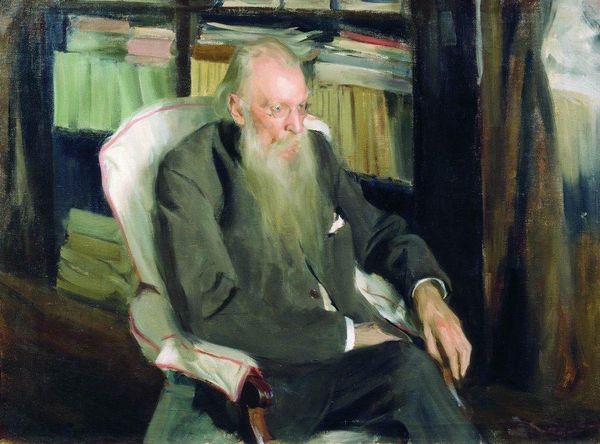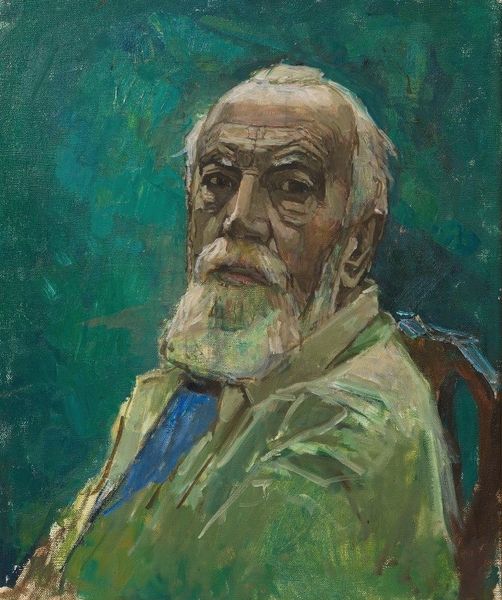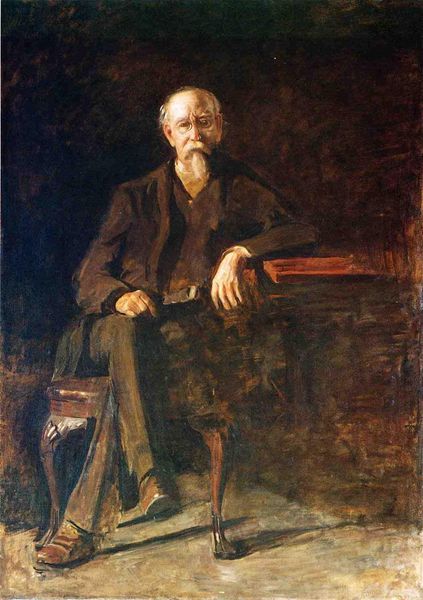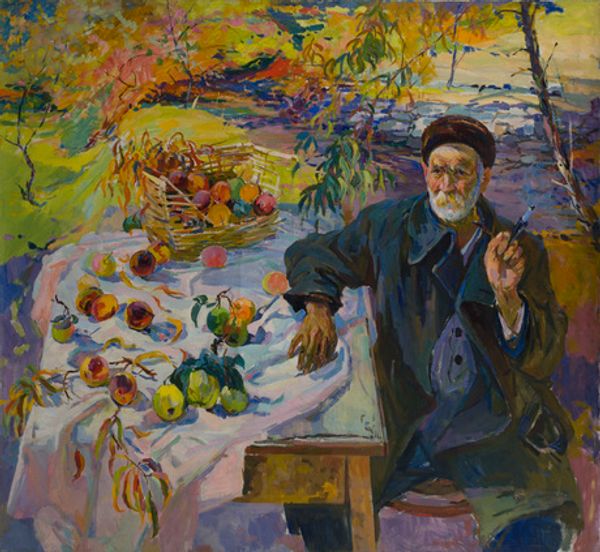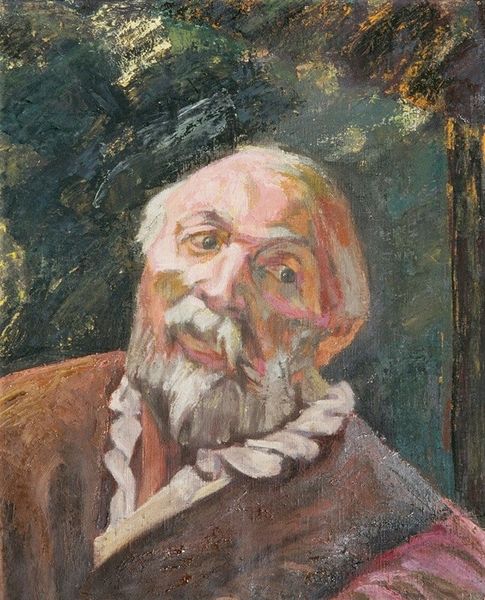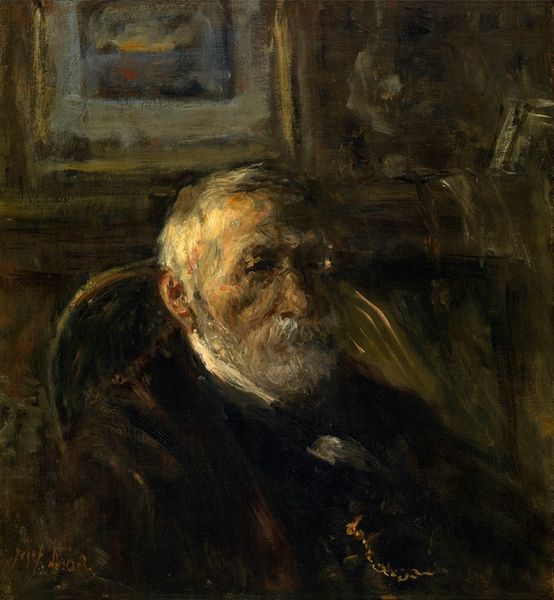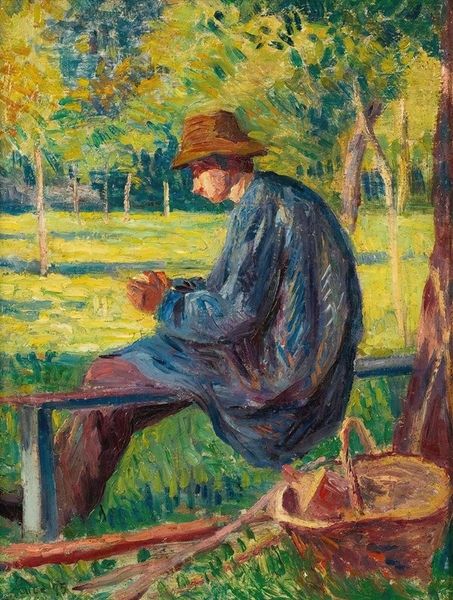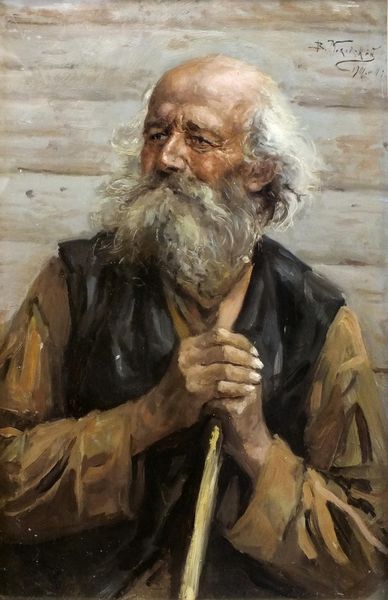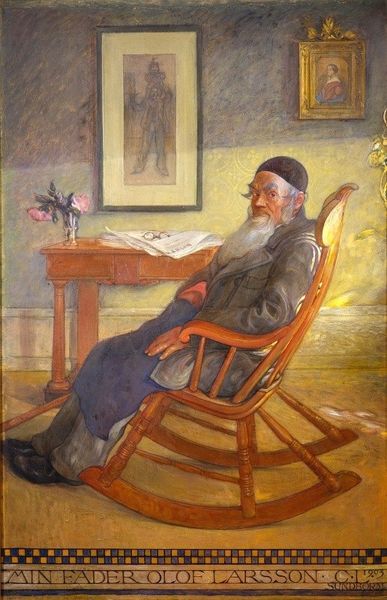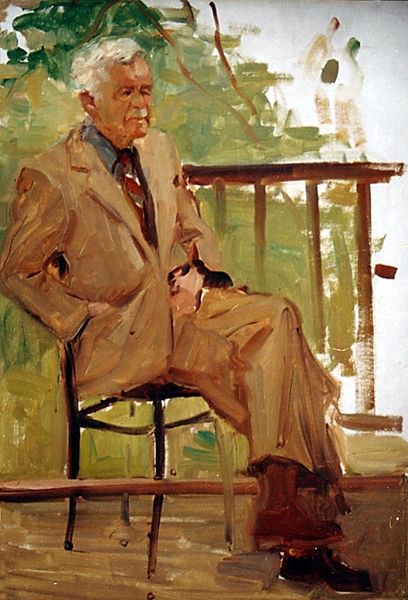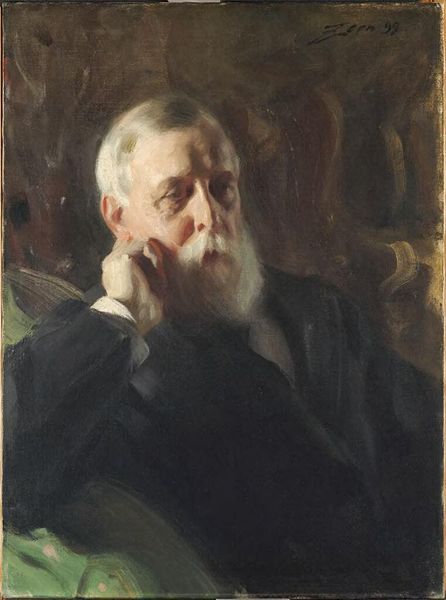
Copyright: Public domain
Curator: Peder Severin Krøyer painted this portrait of Holger Drachmann in 1902. Notice how Krøyer uses oil paint to create this stunning plein-air piece. What’s your initial impression? Editor: It strikes me as very serene. The dappled light, the figure’s relaxed posture… There’s a real harmony in the composition, almost like a visual poem. The color palette seems quite muted. Curator: Muted, yes, but think about Krøyer’s choice to paint this outdoors, capturing Drachmann amidst the trees and open air. This choice connects the poet, the subject, with nature and also hints to a wider society outside art. What statement do you think it is making about labor and creativity, both for Drachmann and Krøyer? Editor: It's true, the light and shadow play is interesting. Look at how it defines the contours of Drachmann's face and clothing! The composition creates a powerful focal point but the choice of clothing, not ostentatious, conveys the image of someone accessible and down-to-earth. Curator: Consider also that artists and writers often collaborated and socialized. Krøyer might have made specific decisions, considering not only the setting or Drachmann himself but also the contemporary artistic conventions in play. Editor: Interesting perspective. Considering these aesthetic and social factors, this becomes much more than just a portrait; the careful placement and hues transform a momentary capture into a lasting narrative about an artist, his peer, and their collective experience. Curator: Indeed. Paying attention to both material realities and the compositional arrangement reveals the depth of this piece. Editor: Ultimately, by analyzing composition and context, we better grasp the multifaceted character of artwork.
Comments
No comments
Be the first to comment and join the conversation on the ultimate creative platform.
